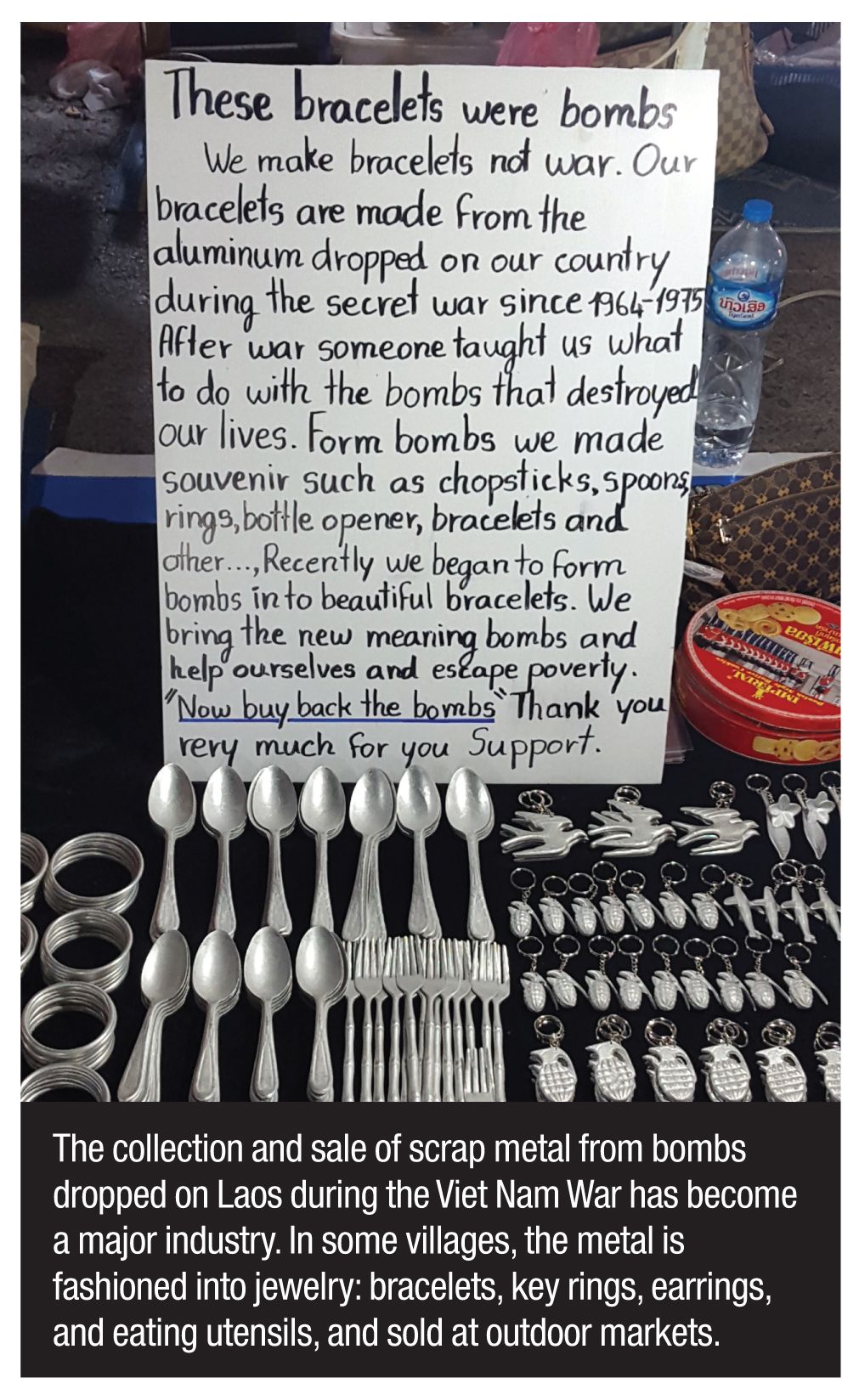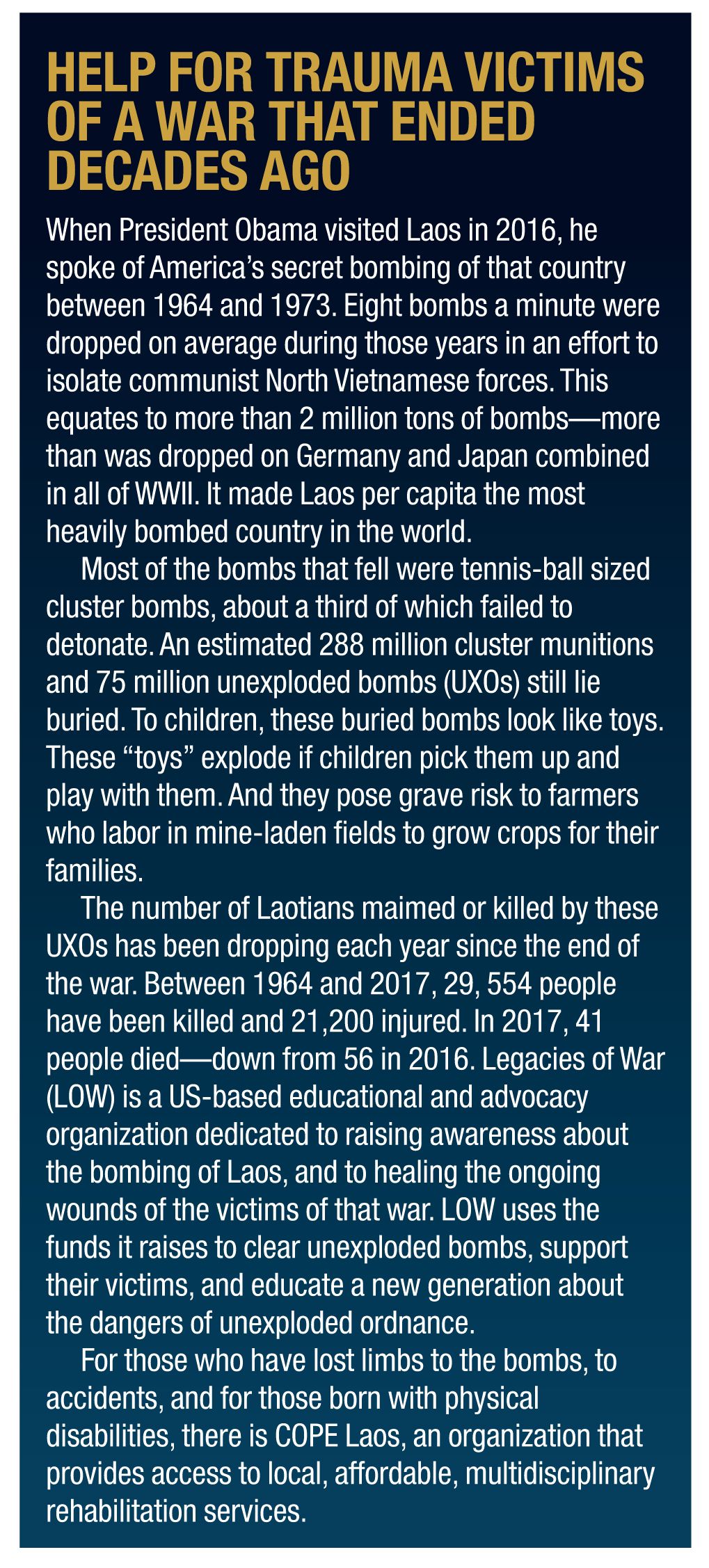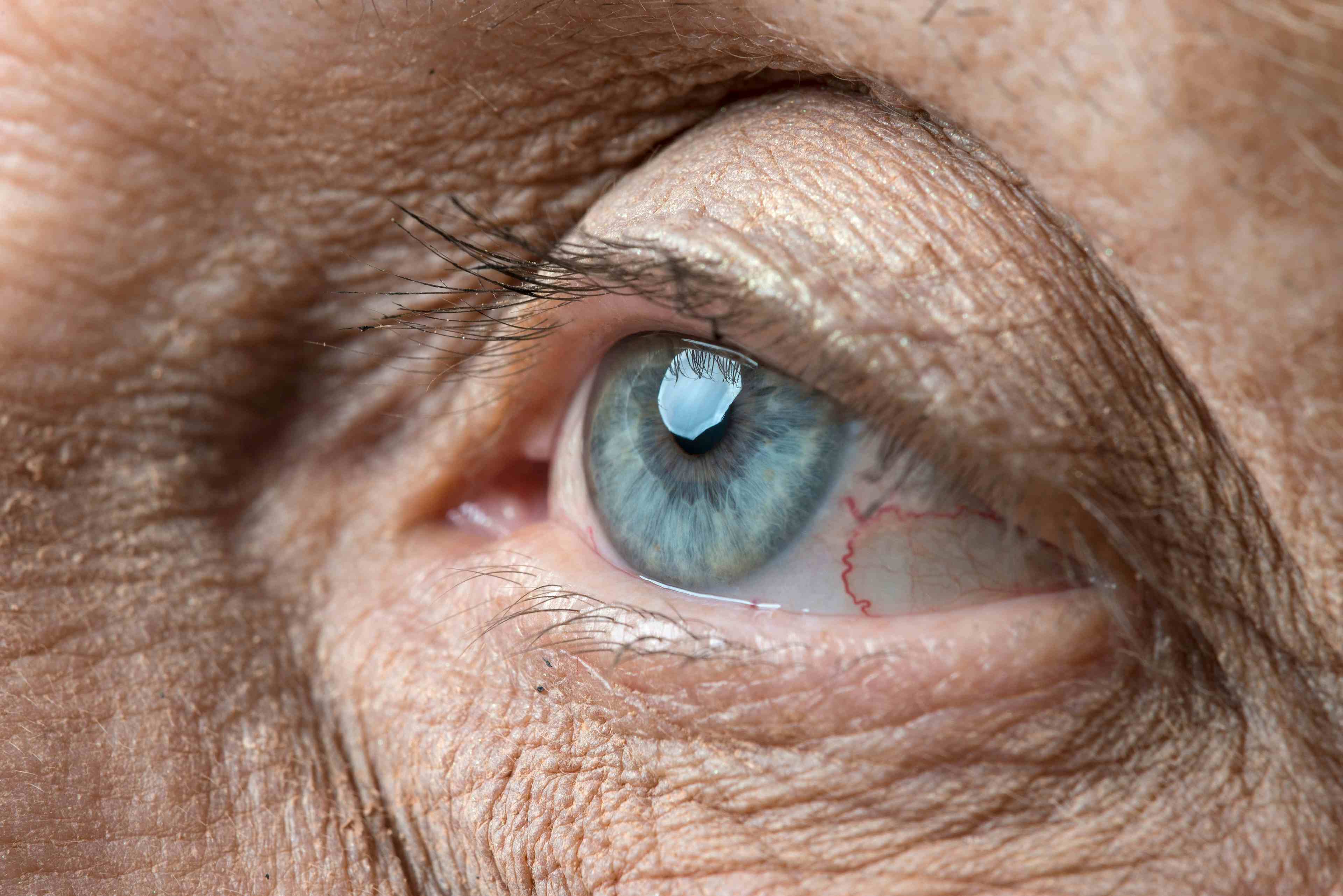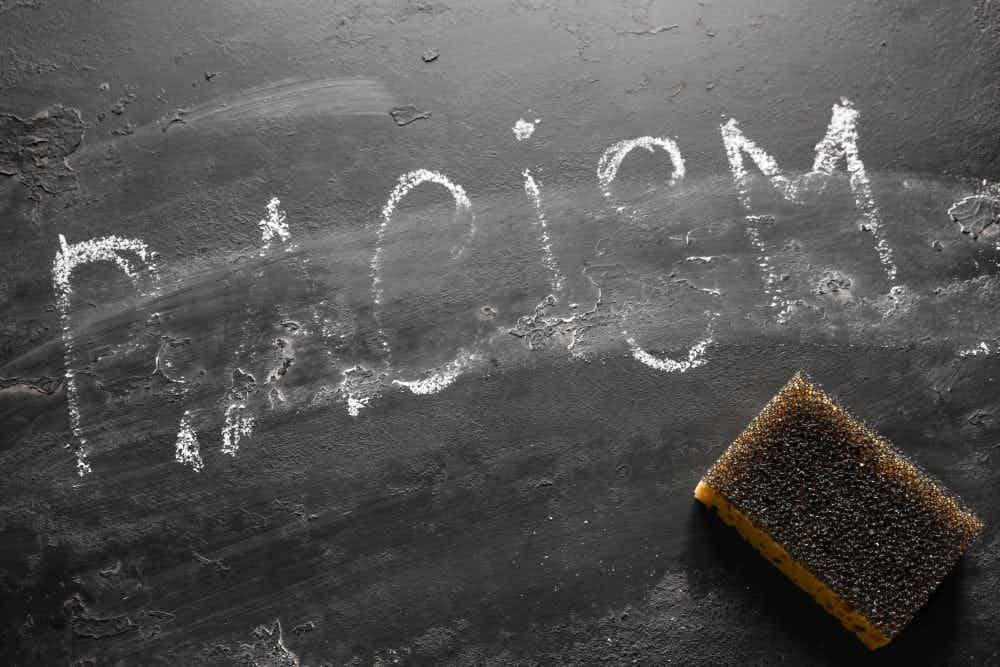Publication
Article
Psychiatric Times
Spirit Chicken-or Lunch? Medical Tales From the Far Side of the World
Author(s):
To many Lao, the concepts of mental illness and spirituality are tightly intertwined.
©tortoon@stock.adobe.com

The collection and sale of scrap metal from bombs dropped on Laos

She might be in her 30s, but it is hard to tell. She is barefoot, dirty, and she has shaved her hair since I last saw her a few days ago. She is everywhere and nowhere in this small, foreign city. . . the rare homeless person, she is a familiar sight to the locals who ignore her and to the expats who notice her but quickly look away. On some days she walks the streets topless. On other days, you can see her sprawled against a tree, or squatting amidst the trash along the sidewalk, muttering to herself or just staring. She must not have a family, or if she does, they have abandoned her to the streets and to the voices I imagine she is hearing in her head. I want to reach out to her, but I cannot speak a word of her language, and haven’t a clue.
The old man is as lean and wiry as a teenager-I know this because I see him walking quietly but purposefully through town wearing only stained shorts. His bald head glints in the tropical sunshine. As he makes his daily rounds, he carefully adjusts the rear-view mirrors on various cars and motorcycles and bikes parked by the curb. He makes random stops on the sidewalk and in the small stores and offices that line the main road . . . at each stop he kneels and makes sounds that I think must be prayers. But the words don’t sound like the local tongue to me. He has been making these daily stops for so long that his presence is no longer even noticed by the shop keepers. The locals tell me that he is an educated man . . . that he once spoke many languages, but that he suddenly stopped speaking altogether long ago. They say he is bo tem-the Lao word that translates roughly into “not full” or “mad” or “crazy person.” Many believe the spirits have infected his brain. The expats have heard he contracted dengue fever or malaria-or was it encephalitis?
A young man just past his teens whose job it is to take care of elephants-a mahout-has been acting very strangely over the past several hours. In between sudden and violent bouts of vomiting that started late in the afternoon, he has been squatting on his haunches on the jungle floor and screaming continuously. His friends carry the ailing man to a nearby hut, which is cushioned by tatami mats, where other mahouts sometimes sleep.
The hut is nestled deep in the Lao jungle. The setting is breathtaking-small groups of tourists come here to walk alongside elephants from a conservation camp and marvel at the teak trees, streams, and rich vegetation. They can hear (and sometimes see) giant wandering water buffaloes that wear bells around their necks, and the sounds of farmers working their nearby fields that have been cleared for growing eggplant, corn, potatoes, and rice. There are giant jungle rats out here, geckos the size of your forearm, and 22 varieties of poisonous snakes. It is a place of magic.
But this mahout and his friends see and feel things that the tourists never do. When they enter this hut, they feel the presence of ghosts. The spirit house, where offerings must be made to the ghosts, is pointing in the wrong direction. The men are all deeply fearful, and they will not rest in this place. Even as their friend continues to scream, they carry him through the jungle. They watch in horror as he vomits up splinters of wood. They are afraid that spirits have caused wood poisoning. The men slowly carry their sick friend through kilometers of the dark trails they know so well and at last find transportation that will take them all to a hospital. The man’s screams alternate with vomiting on the endless ride.
The doctors examine the mahout and take blood and urine samples. All test results are normal. The patient is sent home without a medical diagnosis after the acute symptoms have subsided. He utters not a single word and lies curled in a catatonic-like state for the next 2 days.
The hut in which the mahout was “wood poisoned” is built near the burial grounds of a local village. Another group of men is gathered nearby on the day of a funeral of a villager. Out of nowhere, a chicken suddenly appears. This is the jungle-chickens don’t live here and they don’t just wander by. The men, locals, don’t think for a minute that it’s a coincidence the bird has appeared at this moment. They see not a fowl but rather a living, cackling reincarnation of the just-buried villager-and they are electrified with panic. They begin to flee in various directions from the bird, who responds in kind by running frantic zigzags to escape the men. With all the frenetic back and forth between chicken and men, there is pandemonium-a scene of high theater.
The men finally run away and disappear into the jungle. But two days later, they return to the hut-at about lunch time. The chicken seems to have taken up residence. They find it pecking around for insects. One of the men takes his machete, grabs the bird, and chops its head off. It is promptly cooked and consumed with enthusiasm by the hungry men.
A man lies in the road, moaning-his leg dangling at an odd angle, white bone like a tusk clearly visible, and blood spurting. He was minding his own business, riding his bike, when a speeding and very drunk driver broadsided him. I guess it’s a good thing the collision happened in this town-it is one of only a handful in all of Laos with an ambulance. Many of the locals will steer clear of him and will not dare to try to help, fearful that the spirits who caused his accident will turn their wrath on them.
A baby has just been born at a pediatrics hospital run by physicians trained in Western medicine. The infant-a girl-is covered with a bright red rash. The doctors diagnose thrush, and an IV is inserted into the baby’s tiny hand for delivery of medication. Three days later, the rash is disappearing and the child is well enough to be taken home by her parents. But all is not well at home. Two days later, the rash has flared and the baby is again covered with angry red welts. The parents take their child for help-this time to their village “magic lady.” The healer tells the parents that they must bring their baby to see her twice a day for the next 3 days. The healer blows on the child at each visit and rubs a paste over her red skin. At the end of the third visit, the rash has vanished.
These stories aren’t fairy tales-they were told to me by the people who lived them. I met the parents of the baby girl whose thrush was cured by the magic lady during my recent 3-month stay in a small city in northern Laos. The baby had been born in a modern pediatrics hospital-one of a very few in this lush, lovely, Buddhist country, a facility open to all children in need at no cost. The man who nearly lost his leg (and possibly his life) in the bike accident was taken to a local hospital for adults, a place where aspirin-but not morphine-was available, care was not free, and only the cockroaches scuttling along the corridors were provided with food. After 48 hours of agonizing pain, the man was medevaced to Bangkok, where he underwent multiple surgeries that probably saved his life. “You’re crazy if you come to Laos without medical insurance,” one of the expats told me.
Few other places in Laos have a hospital, or a pharmacy (where you can purchase a variety of medications without a prescription), or an airport for emergency evacuations. Most Lao still live in small villages, where Western medical care is scarce, and perhaps not to be trusted. In these places, some still without electricity, it is the village healer or, more recently, a trained lay person, who is the go-to for help. Offers may be given to the shaman-a pig if a family is rich, or possibly a chicken if a family is less well off. (You can read the story of the “No Chicken Doctor” that appeared in Psychiatric Times in 2013.1)
Animism is alive and well in Laos, and for the majority who live in this country of about 7 million people, spirits rule. To those in the many ethnic groups here, including the Lao Suong (the Lao highlanders), the Lao Theung (the midlanders), and the Lao Luom (the lowlanders), spirits are as present-and as influential-as a nuclear family. The Lao do not make decisions, small or large, without consulting these spirits. Inside and outside their homes, they erect small shrines (that could be mistaken for elaborate bird houses) for these spirit dwellers, to whom they make daily offerings of food or drink or sometimes money. They do so to pay their respects, to request help for some endeavor they are considering, or simply to keep the spirits well fed and at peace. The spirit house is a holy place-feet (the dirtiest part of the body) cannot be pointed in its direction.
Suk khuan-the call of souls-is a ceremony widely performed when someone is born, becomes ill, or dies. If it is the spirits that cause the body and mind to sicken, it is they who can restore health. If a parent has sinned, if a child has been given a name displeasing to the spirits, the child may become sick. If the spirits inhabit a dwelling and give it bad pee, a Buddhist monk will perform a bacci ceremony to dispatch the evil spirits and bring in the good. For those who want help with their problems, and for those who want to understand strange behaviors or bad feelings, Buddhist monks or spirit leaders may be consulted.
Care of the mentally ill
To many Lao, the concepts of mental illness and spirituality are tightly intertwined. Sandra Bode, who co-founded Reach Out Laos, told me,
People with mental problems and visibly problematic behavior are often referred to as ‘pen ba,’ as in visited by a ‘crazy spirit.’ To many Lao, if something is wrong with me, it’s possible a spirit is playing a part in that. Of course, other narratives are also present-depending on location, ethnic group, and access to education and health care, but the spiritual world is certainly relevant for many.
People who go to one of the few hospitals in the country that have psychiatric units often wind up there when their care-givers become desperate and don’t know where else to turn. Most people don’t think ‘there is something wrong with me and I need to go for help’ or they are not sure where to turn. . . . While things are changing, especially with the young generation, and health care is improving, there is still a stigma associated with mental illness. Many young Lao have better access to information about mental health and emotional well being than older generations, and they are determined to contribute to an increased awareness and an open communication culture.”
Sidebar

Still, there are currently two psychiatrists in Laos. Psychiatric care does not exist at the primary care level, nor do psychiatric medications. Only one doctor at the pediatrics hospital I visited had ever seen a patient with a psychiatric illness (ie, schizophrenia), and that was years earlier at another hospital. According to a 2002 report (the most comprehensive and recent I could find), mental health care issues were described as “completely new for the country.”2
The insane (ba) . . . present [with] unusual thoughts and behaviors. They might be dangerous. Madness attributed to the spirit is the major category of madness. Witchcraft and spells are still present in the minds of most people. [The] Most acknowledged of the so-called “mad disorders” is epilepsy. The non-mad category refers to several pathologies, including depression, Down syndrome, and psychological/intellectual dysfunction . . . including mental retardation. Causes are primarily attributed to organic problems . . . an external spell or spirit attack-posession, people breaking a taboo, defective family care and education, food deficiency, and use of contraceptives.
The report also offers insights into the care of the mentally ill-particularly those in remote villages.
Patients . . . were well treated . . . but they were not stimulated as families are not aware of potential improvements. Others were found chained but were washed, fed, and receiving some visits from former friends. Maltreatment . . . occurs during some rituals that are supposed to expel bad spirits (eg, biting the patient). Mental [illness] is . . . an economic and familial burden, difficult to bear for some impoverished families.
Since that report was written, Laos has made significant improvements to its health care system. Between 1990 and 2015, for example, the maternal death rate plunged by 78%. Health units, staffed by villagers trained in basic care, have been established in most villages. And, a number of organizations have become a source of help-and hope-for those in need.
Among these is Reach Out Laos, the country’s first mental health, crisis, and suicide prevention helpline. Phone lines and a 24/7 Facebook chat provide a listening service staffed by trained volunteers who speak English and Lao and who make referrals when appropriate for people with a range of problems, from depression to drug and alcohol abuse or domestic issues.
BasicNeeds is a UK-based non-governmental organization that works with people with mental illness and/or epilepsy. Its Mental Health Innovation Network is a multidisciplinary group that promotes mental health and provides care for those with neurological and substance use disorders.
There are also at least two agencies dedicated to helping those who have lost loved ones or who have been maimed by bombs dropped on Laos during the Vietnam War (Sidebar). These agencies provide prostheses and other rehabilitation services to help heal the physical wounds.
Acknowledgement-I wrote this piece to honor the Lao and their beliefs, and I thank the people who told me their stories. I do not mean to imply that Western medicine is better or has all the answers. But as practitioners of Western medicine make inroads in that country, I hope these narratives offer insights into another way of thinking. I also want to thank Sandra Bode for her extraordinary input, and I share her hope that this piece might contribute to culturally sensitive approaches to spreading knowledge about mental health, and to combat stigma in a way that the Lao can adopt without feeling patronized.
Disclosures:
World traveler, Susan Kweskin is the former Editorial Director of Psychiatric Times. She wrote this article at the invitation of Natalie Timoshin, Executive Editor.
References:
1. Knoedler DW. Cultural psychiatry and the “no chicken” doctor. Psychiatric Times. May 2013. https://www.psychiatrictimes.com/cultural-psychiatry/cultural-psychiatry-and-no-chicken-doctor. Accessed April 8, 2019.
2. Bertrand D, Choulamany C. Mental health situation analysis in Lao People’s Democratic Republic. 2002. https://www.who.int/mental_health/policy/en/lao_mnh_sit_analysis.pdf. Accessed April 8, 2019.































